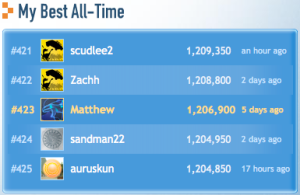A first step in gamifying loyalty programs is to create a more interactive experience for the customer. More specifically, we mean points promotions that allow greater interaction between the program and customers as well as between customers and other customers. Allow us to explain.
In previous entries, we’ve discussed the motivational effect of feedback on behaviour. Why, you ask, is feedback in the context of a points promotion so powerful? For one, people respond to feedback – whether good or bad. Imagine that you failed to beat your friend’s score on a favourite video game. You see she’s ahead of you on the leaderboard and has 10,000 more points. How does this feedback make you feel? And what do you do in response? If you’re like most people, you probably feel like playing again to beat your friend and achieve a higher score. So you play again.
In this way, feedback is powerful but is so often not harnessed by marketers. Why not? Many brands and retailers don’t have the ability to track your purchases or your interactions with their channels. However, loyalty programs do track your purchases and already let you know how many points you’re earning.
However, most loyalty programs rely on you as the customer to look-up your points balance on their website or, worse, to check your monthly statement when it comes in the mail. Instead, if programs provided an easy way for you to see how many points you’re accumulating throughout a promotion – on their website, mobile site or application – the experience would become interactive and you could adapt your purchasing behaviour to maximize your rewards.
And if loyalty programs allowed customers to see how their rewards were stacking-up compared to others during a promotion, it would unleash incredibly powerful social mechanics and take engagement levels that much higher. Here, we’re refering to social comparison, competition, sharing, and collaboration.
The ability to see how you’re doing compared with others – for example, through face piles, leaderboards, or progress bars – is powerful. However at Friendefi, we advocate that social mechanics are only maximized when the other customers you’re comparing yourself to are either people you know (i.e. friends) or peers that you identify with (i.e. other elite status customers, colleagues, members of the same interest groups). This is when engagement levels have the potential to really take-off as customers not only see their progress in real-time but are also seeing that of others they already compare themselves to. And even if the promotion isn’t competitive (i.e. has one winner), the addition of social mechanics can still drive greater engagement because your customers are no longer responding to a promotional offer in a ‘silo’. They’re doing so with other people they know, which increases relevancy and sharing and, well, is just more fun.


